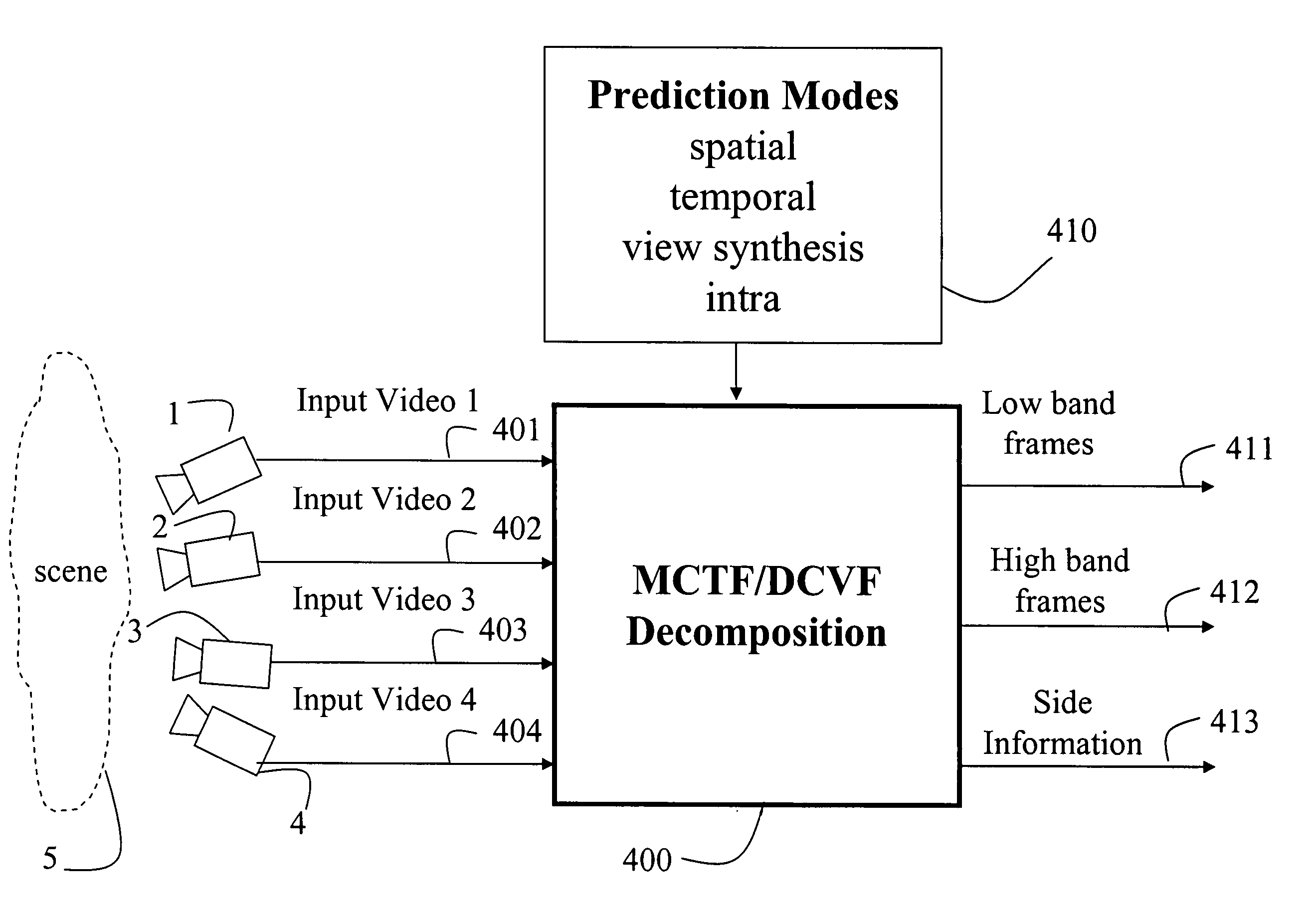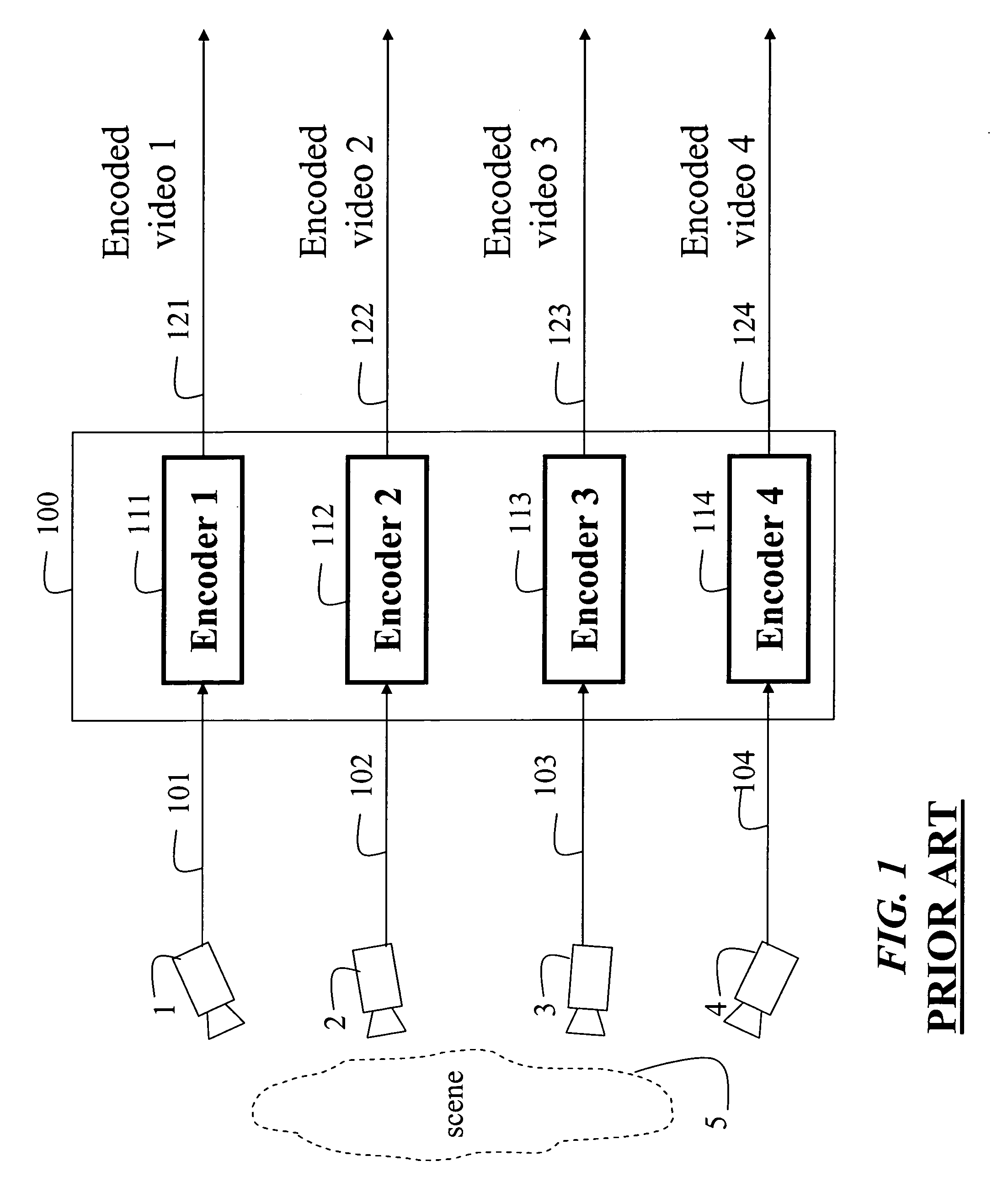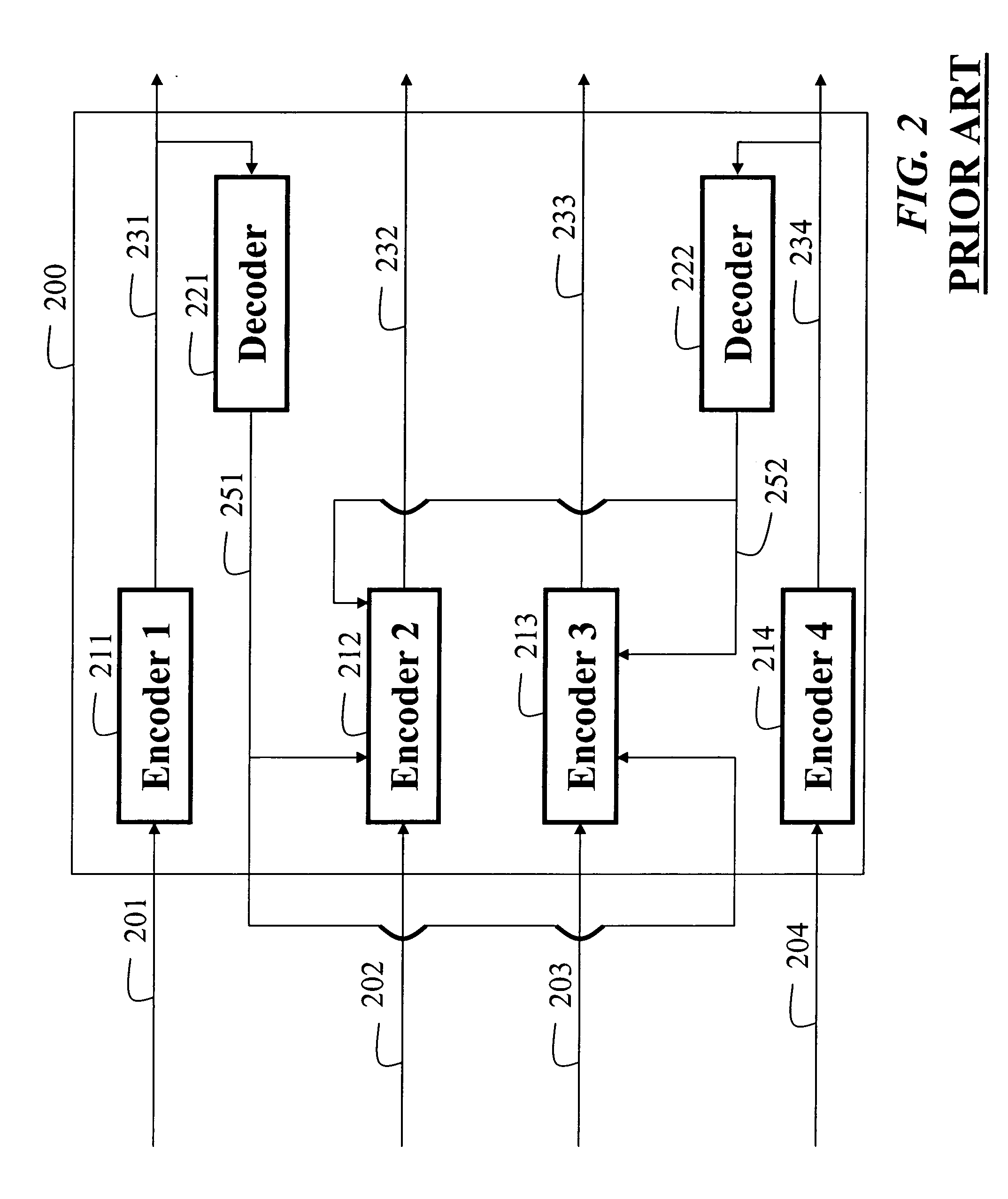Method and system for randomly accessing multiview videos with known prediction dependency
a multi-view video and dependency technology, applied in the field of random accessing multi-view videos with known prediction dependency, can solve the problems of inability to encode multi-view videos, inability to use efficient methods, and inability to directly encode multi-view videos
- Summary
- Abstract
- Description
- Claims
- Application Information
AI Technical Summary
Benefits of technology
Problems solved by technology
Method used
Image
Examples
example 1
[0181](V, T)=(2, 2). This example shows that view2 is dependent only on two frames in view0, and that all frames in view2 are marked with the current process. This is a significant reduction compared to sequential coding of all frames, as in the prior art.
[0182]
20000000300000000000000045167891011000000000000000000000000000000000000000000000000000000000000000
[0183]Although the frames marked 5, 6, 8, 9, 10 are not used as a temporal reference pictures in view2, these frames are used for reference to predict frames in neighboring views, i.e., view1 and view3. Because the ‘unused for reference’ flag is not set, it is not obvious that these frames could be skipped. However, with some additional information, such as a temporal dependency message or a syntax element that distinguishes whether the current frame is used as a temporal reference in the current view or only as a spatial reference in neighboring views, it is possible to not mark these frames as required, thereby reducing the req...
example 2
[0184](V, T)=(1, 3). This example shows that view1 is dependent on two other views, view0 and view2. All frames in both view0 and view2 are marked as required frames. Because some frames in view1 are reference, not all frames in view1 are marked as required.
[0185]
267891011124000200211220230240003131415161718195000000000000000000000000000000000000000000000000000000000000000
[0186]As with the previous example, there are also some frames that have been marked that the target frame has no dependency on. For example, the frame marked 23 in view1 is not required to access the target frame. A temporal dependency message could convey such information. Also, the frames marked 6, 10, 12, 13, 19 are only used as a reference for frames in view1 that are not needed as reference to access the target frame. This second order dependency is more difficult to detect.
example 3
[0187](V, T)=(5, 2). This example demonstrates that the required number of frames does not grow significantly when the target frame is in a later view because the view prediction dependency is limited.
[0188]
400000008000000000000000300000007000000000000000210111213141516600024010250260270005171819202122239000000000000000
[0189]The embodiments of the method of this invention effectively minimizes the decoder requirements for spatial random access with multiview bit streams. The method is especially useful for free viewpoint video applications that require access to a target frame of a multiview bit stream for a randomly specified view at a randomly specified time.
PUM
 Login to View More
Login to View More Abstract
Description
Claims
Application Information
 Login to View More
Login to View More - R&D
- Intellectual Property
- Life Sciences
- Materials
- Tech Scout
- Unparalleled Data Quality
- Higher Quality Content
- 60% Fewer Hallucinations
Browse by: Latest US Patents, China's latest patents, Technical Efficacy Thesaurus, Application Domain, Technology Topic, Popular Technical Reports.
© 2025 PatSnap. All rights reserved.Legal|Privacy policy|Modern Slavery Act Transparency Statement|Sitemap|About US| Contact US: help@patsnap.com



